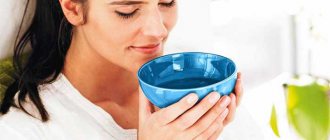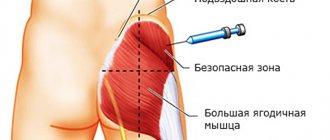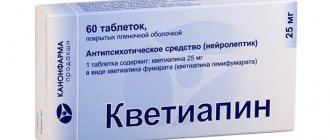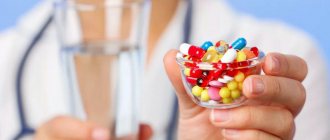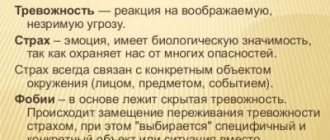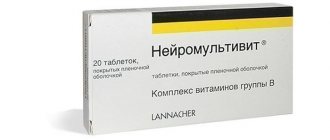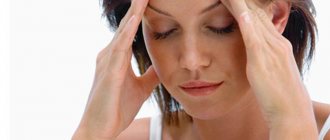Injections
Drugs for angiodystonia, used in the form of injections
| A drug | Group | Route of administration | Destination purpose |
| "Phenazepam" | Tranquilizers | Intravenous (IV) or intramuscular (IM) | Correction of a panic attack (removes severe anxiety, horror, relieves acute mental disorders) |
| "Propazin" | Neuroleptics | IV (diluted with glucose) or IM (pre-mixed with novocaine) | Treatment of acute emotional disorders, psychomotor agitation (inappropriate actions due to clouded consciousness) |
| "Atropine" | M-anticholinergic | Subcutaneous, i.v., i.m. | Blocking the activity of the parasympathetic part of the autonomic nervous system |
| "Milgamma" | Vitamins | V/m | Replenishment of deficiency of B vitamins |
| "Actovegin" | Reparant (reducer), microcirculation corrector | V/m | Correction of metabolism in the body and cells of the nervous system, improvement of tissue blood flow, antioxidant effect |
Usually, fast-acting drugs are injected intravenously in acute conditions (for example, severe panic attacks); intramuscular administration is used in the absence of an oral option.
You should switch to drug therapy for VSD after lifestyle correction and conscientious psychotherapy (perhaps the psychologist will be able to convince the patient that cancerophobia is invalid, and anxiety will go away without the use of sedatives and tranquilizers).
Classification of prescribed medications
If there is a disorder in the vegetative-vascular system of a mixed type, breathing exercises are recommended for treatment. Mixed disorder can be countered by focusing on deep and measured breathing. Mixed conditions require work on strengthening the nervous system. The best thing that is recommended for those suffering from mixed disorder is to brew herbal teas.
For dystonia of the hypertensive type, sedatives are used for treatment. Salt, caffeine, fats and alcohol are contraindicated for hypertensive dystonic patients. Hypertensive patients need physical activity, reflexology and water treatments. Vegetables and fruits, chocolate are recommended for hypertension.
Patients with hypotonic disorders will be relieved by ginseng and eleutherococcus. They are not prescribed to a hypotensive patient with increased excitability or insomnia. Baths and showers are recommended for a hypotonic state. Hypotonic dystonics need exercise therapy and reflexology.
For the treatment of VSD the following drugs are prescribed:
- Antidepressants are a group of psychotropic substances. Antidepressants improve mood, reduce or completely eliminate depression and apathy. Antidepressants relieve irritability and emotional stress. Antidepressants are taken for a course of at least six months. Antidepressants begin to act within 10-14 days from the start of treatment. Only a doctor will determine which antidepressant medications to prescribe;
- neuroleptics are psychotropic drugs;
- Tranquilizers are designed to relieve anxiety and relieve fear. Medicines are characterized by sedative, anticonvulsant, muscle relaxant and hypnotic effects;
- sedatives.
The mildest are sedatives, the strongest are antidepressants.
Nootropics are used to get rid of fears. They have a positive effect on the brain - normalize its functions and stimulate blood flow. Nootropics are Tenoten, Phenibut, Phezam, Phenotropil, Pantogam, etc. The metabolic group to which Glycine belongs also provides an anxiolytic effect.
Patients are also recommended other drugs that affect only the external manifestations of the disorder, without in any way affecting the root cause of their appearance. These include various new restorative drugs:
- mineral complexes containing magnesium, zinc and selenium;
- enzyme;
- beta-blockers (Mexidol, Anaprilin, Propranol);
- metabolic compounds (Actovegin, Riboxin);
- vitamins C and B,
- medications that normalize the functionality of the cardiovascular system;
- adaptogens are any compounds that increase resistance to negative external influences.
Phytotherapy
At the initial stage of the disease, VSD is treated with soothing herbs: valerian root, hawthorn, motherwort, peony tincture, oregano, lemon balm, thyme.
Medicines prepared from herbal preparations using an industrial method are also effective - Novopassit, Negrustin, Persen.
Vitamins and homeopathy
Vitamins are useful regardless of what type of disease (hypertensive, hypotonic or mixed) the disease has developed. The patient needs vitamins B and C. Vitamins A and E are also needed.
To achieve a general strengthening effect, not only vitamins are prescribed; in mild cases, homeopathy helps well. The course of treatment is drawn up on the basis of examination data, as well as what type - hypertensive, mixed or hypotonic - VSD is manifested in the patient. The dosage is determined by the same principle.
Homeopathy is aimed at eliminating the causes of the disease. When selecting a course of treatment for adult patients, the possibility of adjusting the consequences of the condition is taken into account. Homeopathy has no side effects.
Just like vitamins, patients need other auxiliary substances. For tachycardia, a regimen that includes both vitamins and compounds containing potassium is more often prescribed. Homeopathists will also recommend Cardio-gran, Pumpan, Neurohel, etc. Vitamins will give you strength, but everything else is both a sedative, a vasodilator, and an antispasmodic. For intracranial hypertension, both vitamins and diuretics are prescribed.
Adaptol are tranquilizers. The medicine helps increase the level of serotonin in brain tissue. Adaptol directly affects the central nervous system without affecting its peripheral parts. Based on the effects of Adaptol, it resembles antidepressants.
Adaptol has a specific taste. Adaptol should be combined with caution with other medications that have a psychotropic and sedative effect, as well as with alcohol. This remedy enhances their effect. In case of overdose, Adaptol complicates bowel function and leads to a decrease in body temperature and blood pressure.
Adaptol is most effective in the initial stages of development of vegetative-vascular dystonia. Treatment with it at the time of exacerbation of the condition is ineffective. Adaptol is used on an ongoing basis to prevent attacks.
Actovegin contains minerals and fatty acids. Actovegin has a strong antioxidant effect. Actovegin helps eliminate metabolic and vascular abnormalities in the functioning of the brain.
For vegetative-vascular dystonia, Actovegin is prescribed intramuscularly. The prescribed release form, dosage and course duration are determined depending on the severity of the condition.
Actovegin can cause urticaria and fever. Actovegin can provoke anaphylactic shock. Actovegin does not affect attention.
Anaprilin - relieves angina attacks. Anaprilin also slows down the speed of transmission of nerve impulses to the myocardium. Anaprilin increases the tone of the uterus and bronchi. Anaprilin should not be prescribed for hypotonic VSD, asthma, depression, or heart failure. Anaprilin is also contraindicated in case of cardiac conduction disorders.
Anaprilin has proven itself well in the treatment of hypertensive type VSD. Anaprilin alleviates panic attacks. This is due to the fact that Anaprilin affects the sympathetic nervous system.
Afobazole is a selective anxiolytic. Afobazol is not endowed with muscle relaxant capabilities. In case of vegetative-vascular dystonia, Afobazole is necessary for the prevention and treatment of anxiety conditions. Afobazol gives effect after 3-4 weeks of use.
Afobazole does not interact with Thiopental or ethanol-containing compounds. Afobazole can enhance the anti-anxiety effect of Diazepam.
Tablets are prescribed to patients with unstable mental health and suspiciousness. Afobazole should not be taken by pregnant, lactating women, or children.
In case of overdose, Afobazole produces a pronounced sedative effect.
Types of vegetative-vascular dystonia
Doctors distinguish the following clinical variants of the course of VSD:
- cardialgic;
- tachycardial;
- hypertensive;
- visceral;
- hypotonic;
- asthenic;
- respiratory.
A mixed type of vegetative-vascular dystonia is distinguished separately.
The cardialgic type of VSD is characterized by prolonged dull or sharp pain in the heart area. They are accompanied by anxiety, increased blood pressure and increased heart rate. With the hypertensive type, short-term surges in blood pressure are recorded, which, unlike hypertension, does not rise above 170/95 mmHg. The visceral type of VSD appears with severe and frequent pain in the abdominal cavity, which is accompanied by bloating, constipation or diarrhea.
In patients with the hypotonic type of VSD, blood pressure decreases for a short time to 90/60 mmHg. and below. The patient experiences weakness, decreased body temperature and increased sweating.
The asthenic form of VSD is characterized by the following symptoms:
- fatigue;
- loss of stamina for a long time;
- temperature increase to 37.5 °C;
- slight trembling in the hands.
The respiratory type of VSD is manifested by pressing pain in the chest and difficulty breathing. They are accompanied by a feeling of a “lump in the throat,” a dry cough, yawning, and an inability to take a deep breath. The mixed form of the disease can combine symptoms of several types of vegetative-vascular dystonia.
All types of VSD are characterized by acute attacks - vegetative crises. They appear suddenly. With an exacerbation of vegetative-vascular dystonia of the hypertensive type, the patient experiences sudden agitation. His heart rate increases, blood pressure rises, chills occur, and his legs get cold. With VSD of the hypotonic type, shortness of breath, weakness, nausea, and sweating appear during an attack. The person feels as if his heart is skipping a beat. A decrease in blood pressure is recorded and blood pressure decreases.
Grandaxin
Grandaxin is a muscle relaxant with an anticonvulsant effect. Grandaxin is a mild tranquilizer. Grandaxin relieves withdrawal symptoms, relieves insomnia and obsessive worries. Grandaxin is taken in a course, the result of its effects appears after some time.
Grandaxin goes well with hormone therapy. With a well-chosen therapeutic regimen, Grandaxin has no side effects. If the dosage is exceeded, muscle spasms and cramps are possible. Grandaxin can lead to depression of the respiratory center. Grandaxin is allergic.
Corvalol has a complex effect on the body. It is used to treat heart pathologies. Corvalol has a calming effect.
Mexidol facilitates mental activity and activates blood supply to the brain. Mexidol also has membrane protective and antioxidant capabilities. Mexidol is used to treat neuroses and anxiety disorders.
Mexidol is administered intramuscularly or intravenously. Mexidol should not be taken if the liver or kidneys are impaired. Mexidol is not prescribed to children either. Mexidol enhances the effects of anticonvulsants, antipakinsonics and anti-anxiety compounds of the benzodiazepine series.
Persen is a calming composition. Persen contains extracts:
Persen helps with headaches and dizziness. Persen is also indicated for cerebral vascular spasms. Persen helps normalize sleep. Persen enhances the effect of painkillers.
Piracetam has a wide spectrum of action. Piracetam enhances glycolytic processes and facilitates the utilization of glucose. Piracetam increases the integral activity of the brain and facilitates learning. Piracetam restores and stabilizes cerebral functions (consciousness, speech, memory). Piracetam accelerates microcirculation without constricting blood vessels.
Piracetam should not be prescribed for renal failure, acute stage of hemorrhagic stroke, agitated depression, Huntington's chorea.
Piracetam is contraindicated in children under 1 year of age, pregnant and nursing mothers.
Tenoten is a homeopathic medicine with a pronounced anti-anxiety effect with an activation effect. Tenoten activates mechanisms that can limit stress. Tenoten is neither a muscle relaxant nor a sedative. Tenoten is used to treat asthenia and neuroses with an anxiety component, as well as for vegetative-vascular dystonia.
Tenoten relieves tension, instability of the psycho-emotional state, and dizziness. During intoxication, as well as during hypoxia, Tenoten acts as a neuroprotector.
Tenoten is compatible with other medications.
Due to the fact that Phezam contains Cinnarizine, the drug stimulates blood circulation. Phezam also contains Piracetam.
Phezam is a nootropic. Fezam is also characterized by a vasodilating effect.
Phezam is prescribed for a variety of problems with the central nervous system. Phezam is used for prevention of headaches. Taking Phezam reduces the incidence of depression.
Phenibut is a nootropic. Phenibut is intended to relieve anxiety and tension. Phenibut reduces irritability. Phenibut relieves headaches.
Phenibut improves mental and physical performance. Phenibut is indicated for patients with asthenia.
Phenibut should not be prescribed if the patient has an ulcer or liver failure.
Phenazepam is a tranquilizer. The tablets have a relaxing effect on the muscles. Phenazepam relieves anxiety and levels emotional stress.
The tablets provide relief for reactive psychoses, psychopathic states, neuroses and vegetative-vascular dystonia. Phenazepam is needed for obsessive states. In case of VSD, Phenazepam is valuable as a means of influencing sympathoadrenal crises.
Phenazepam should not be taken during pregnancy or while breastfeeding. Phenazepam tablets are not prescribed to children. Phenazepam can have a negative effect in case of organic brain damage, renal and liver failure.
Release form: tablets or solution. Phenazepam should not be combined with ethanol-containing products.
special instructions
Caution should be exercised when taking the drug orally for arrhythmia, angina pectoris, decreased vascular tone and unstable blood pressure.
In the most acute cases, parenteral medicine is used until the patient’s condition improves, and then they switch to taking tablets. The drug is taken for chronic disorders.
In case of cerebral hemorrhagic stroke, intravenous administration of the drug is allowed only after acute manifestations have been eliminated. Let's consider analogues of the drug "Vinpocetine".
These include:
- "Pramistar";
- "Sidnocarb";
- "Glycine VIS";
- "Glycine Ozone";
- "Acefen";
- "Vinpotropil";
- "Bravinton";
- "Pyracesin";
- "Carnicetine";
- "Phesam";
- "Piracetam";
- "Aminalon";
- "Nooklerin";
- "Semax";
- "Olatropil";
- "Cephabol";
- "Cerebrocurin";
- "Cerebrolysate";
- "Pramistar."
There is no information about the effect of the drug on the ability to drive vehicles and perform work associated with high-risk mechanisms.
Patients and doctors have mixed opinions about Vinpocetine. This drug is most often used to improve blood supply to the brain, or for accelerated rehabilitation after an acute stroke. It is used for intermittent maintenance therapy in people with chronic narrowing of the blood vessels in the brain. Doctors relatively rarely use the drug in their practice. According to many experts, it has little therapeutic effect, but causes a large number of adverse reactions.
However, in relatively mild cases of cerebrovascular accidents, Vinpocetine is prescribed due to its low cost. It is not recommended to use this drug without recommendation and supervision, since use may cause side effects from the cardiovascular system, in particular, lowering blood pressure and increased heart rate. Also, this drug is contraindicated for use by persons under 18 years of age.
Patients talk about the effectiveness of Vinpocetine in relieving dizziness and headaches caused by short-term vascular spasms, treating vegetative-vascular dystonia, and eliminating the consequences of acute stroke.
News from sponsors:
With vegetative-vascular dystonia, patients are often susceptible to fear of death and panic attacks. The list of medications for VSD is extensive. Any pills can be taken solely on the basis of a doctor’s opinion. He will also tell you which of them will be the most effective, taking into account what type of VSD the patient’s condition belongs to (hypertensive, hypotonic or mixed). The specialist will select the required dosage. All drugs last as long as they are taken.
Cinnarizine
Cinnarizine is not an antidepressant or tranquilizer. This is a restorative. Cinnarizine is indicated to normalize the functioning of the vestibular apparatus. That is, Cinnarizine helps with motion sickness. Cinnarizine is also prescribed to children with developmental delays.
Cinnarizine is an auxiliary medication in the treatment regimen for vegetative-vascular dystonia. Cinnarizine normalizes blood circulation. Cinnarizine is prescribed exclusively by specialists.
Eltacin is a three-component composition. It contains Glycine, Cystine and Glutamic acid. By forming Eltacin, they contribute to the fact that the body independently begins to produce glutathione.
Each component included in Eltacin - Glycine, Cystine and Glutamic acid - works as a self-sufficient agent. Eltacin contains these components in optimal proportions. Eltacin also contains Glycine, which normalizes the functioning of the nervous system.
Eltacin adequately copes with autonomic dysfunction. Eltacin has one contraindication – hypersensitivity to its individual components. Eltacin is most often prescribed to adolescents.
In what cases is it prescribed?
Indications for use of the drug "Vinpocetine":
- post-traumatic encephalopathy;
- cerebral circulation insufficiency;
- vegetative-vascular dystonia;
- encephalopathy;
- Meniere's disease;
- vascular lesions of the membrane and retina.
Let's also consider the side effects and contraindications of Vinpocetine.
Efficacy of therapy
Drugs: effectiveness according to patient reviews on the Internet.
The medicine for VSD helps to cope with a disease such as vegetative-vascular dystonia - a disease of the autonomic nervous system, manifested in disruption of the functioning of blood vessels and almost all organs of the body.
The disease is very common: among children the frequency can reach 25 percent; by retirement age the number of cases increases to 70 percent.
The increase in the number of cases is associated with deteriorating environmental conditions and ongoing stress. Hereditary factors and the individual state of the nervous system, chronic diseases or previous infections also influence the risk of getting sick.
Symptoms of VSD may include frequent tachycardias or arrhythmias, accompanied by changes in blood pressure, increased sweating, failures of the thermoregulation system and some other changes in the functioning of organs. But not everyone knows what to take for vegetative-vascular dystonia.
Most patients do not require a special course of therapy; the disease can be controlled by changing your lifestyle and habits. However, if dosing exercise, a rational daily routine and proper nutrition do not lead to stabilization of the body’s condition, it makes sense to consult a specialist for the correct medication prescription and take medications for VSD.
You should not trust advertising on TV and reviews from neighbors to choose your own medicine. This should only be done by a doctor based on the diagnosis.
To alleviate VSD, medications are used to eliminate problems in internal organs.
Medicines for VSD can be divided into the following groups:
- Sedatives.
- Means of influence on the cardiovascular system.
- Drugs affecting the central nervous system, including antipsychotics, tranquilizers, sleeping pills, antidepressants.
It is almost always advisable to take vitamins that boost immunity. The doctor must determine the course of treatment; the correct combination of medications for VSD will quickly normalize a person’s condition.
According to the type of violation, VSD is divided into:
- hypertensive type;
- hypotonic type;
- mixed type.
The hypertensive type of disease manifests itself in sudden jumps in blood pressure, sometimes headaches, although the general condition does not worsen. The patient is prescribed a diet with vegetables and fruits, while spicy, fatty, and alcohol-containing foods are excluded. Physical activity is prescribed.
Hypotonic disorder appears in the form of severe weakness, sweating, and a decrease in blood pressure below 100 mm. rt. Art. The patient is prescribed water procedures, reflexology, and sedative medications for VSD are prescribed.
The mixed type is characterized by an unstable level of blood pressure, periodic pain in the chest area, changes in heart rate, loss of strength and dizziness. To treat this type, it is recommended to take herbal infusions and teas to normalize breathing, and also prescribe medicine for VSD.
VSD during pregnancy
If vegetative-vascular dystonia occurs during pregnancy, this makes its course quite difficult. When a woman experiences a nervous crisis during pregnancy, this also negatively affects the child. Of course, if a pregnant woman is diagnosed with vegetative-vascular dystonia, the pregnancy is not interrupted, and an experienced doctor prescribes special treatment.
Symptoms during pregnancy can be wide-ranging, and it can be difficult to figure out what's causing many of the problems. In order to rule out many problems during pregnancy, the doctor first prescribes the necessary tests.
During pregnancy, it is impossible to determine the specific symptoms of vegetative-vascular dystonia, but a woman may complain of:
- poor digestion;
- constant pressure surges;
- frequent dizziness;
- labored breathing;
- sweating and jumps in body temperature;
- frequent depression;
- worry about the health of the unborn baby.
But the culmination of vegetative-vascular dystonia during pregnancy is panic attacks. Panic attacks are characterized by a complete loss of control over your thoughts and actions.
Such panic attacks
negatively reflect on the baby, and he also experiences severe stress. Therefore, doctors prescribe various medications during pregnancy to calm the nervous system.
Impact of the disease on the child
Vegetative-vascular dystonia during pregnancy greatly complicates the course of joyful motherhood and negatively affects the condition of the child. This is expressed in the fact that the child does not receive the necessary and proper nutrition, anemia or placental insufficiency may develop.
Since during pregnancy the mother constantly experiences panic attacks, the baby may be born with low weight, with mental retardation and, generally, such children have a very weak immune system.
Panic attacks are characterized by constant fear in the mother and the thought of the sudden death of the child. Panic attacks do not lead to anything good, and the pregnant woman receives a number of negative emotions, experiences a lot of stress, which as a result can lead to uterine hypertonicity, and in many cases the pregnancy ends in miscarriage.
In general, it is very difficult to predict the behavior of a pregnant woman, and it is simply impossible to exclude panic attacks, but properly prescribed treatment will help to avoid this, and the child will be able to be born full and healthy.
Tablets for VSD (vegetative-vascular dystonia): combination drugs
Tablets for vegetative-vascular dystonia are different, since the disease can be treated with other drugs.
Mexidol - tablets for VSD in the form of an antioxidant, improve blood circulation and blood supply to the brain, are taken for anxiety, dizziness and other anxiety conditions, make a person more mentally stable, and enhance intellectual activity. These tablets for VSD have contraindications: children's age, should not be taken during pregnancy and lactation, as well as for those suffering from liver and kidney dysfunction. Meskidol can also be used during a hypertensive crisis in the form of injections intravenously or intramuscularly.
Tenoten - tablets for vegetative-vascular dystonia, increase resistance to stress, relieve anxiety, act as a neuroprotector in hypoxia syndrome. Contraindicated during pregnancy and lactation; reported side effects include flatulence, drowsiness, and heartburn. Available in the form of tablets for vegetative-vascular dystonia to be taken with food. Tenoten is a homeopathic remedy; the effect of taking it does not appear immediately, but only after some time.
The following medications can be considered as combined drugs to combat vegetative-vascular dystonia:
- Neuromultivitis - vitamin tablets for VSD, act as a stabilizer for the functioning of the nervous system. It contains B vitamins, pyridoxine, thiamine. Prescribed for the treatment of neuralgia, a tendency to neuropathy and neurocirculatory dystonia. Available in the form of anti-VSD tablets for oral administration after meals. May cause rash, nausea, tachycardia, prohibited for pregnant and lactating women. Refers to multivitamin complexes.
- Novopassit is a sedative drug based on natural plant extracts. Prescribed for insomnia, anxiety, and intellectual stress. Available in liquid or tablet form, dissolved in water and taken orally at different times. There are contraindications for children. Side effects: gastrointestinal disorders, drowsiness, weakness.
Also used:
- Diuretics - preparations of lingonberry, nettle, juniper.
- Succinic acid as a source of antioxidants.
- Preparations containing calcium and potassium.
- Metabolic agents - glycine.
- Adaptogens - extracts of Eleutherococcus, ginseng.
VSD medications: the most popular medications and medications for children
VSD medications are most often available in tablet form. The drugs most commonly used by doctors for VSD include the following.
Anaprilin is a beta-blocker, blocks beta receptors, a hypotensive, antiarrhythmic agent. This drug for VSD is indicated for arterial hypertension, angina pectoris, unstable angina, sinus tachycardia.
After administration, the frequency of heart impulses slows down, reducing the risk of tachycardia, which in turn is the most common problem in patients with hypertension. The medicine will help in the fight against essential tremor and help fight panic attacks.
Contraindications : pregnancy and lactation, chronic heart failure, acute heart failure, acute myocardial infarction, bronchial asthma and diabetes mellitus.
Afobazole is an anxiolytic drug.
These drugs for VSD are used to reduce mental discomfort, combat irritability, anxiety, meteosensitivity, suppress sensory and respiratory symptoms and in patients affected by vegetative-vascular dystonia. The effect of taking the drug for VSD
appears after a certain time. Afobazole is non-toxic, is not accompanied by a hypnosedative effect, does not affect memory, and reduces other autonomic disorders: increased sweating, dry mouth. Contraindications: childhood, pregnancy and lactation, individual intolerance to the drug for VSD.
Gidazepam is a tranquilizer with anxiolytic, vasodilator and anticonvulsant effects. It is prescribed to adults for neurotic conditions, asthenia, migraines, anxiety, irritability, tension, sleep disorders, and mental instability.
During stress, these drugs for VSD have a beneficial effect on blood vessels. Gidazepan is taken orally, the duration of treatment is determined by the attending physician - from a couple of days to several months. Effective for insomnia and frequent migraines.
Contraindicated in pregnant and lactating women, people with liver failure, kidney dysfunction and cirrhosis. Side effects include weakness, drowsiness and lethargy, absent-mindedness, and allergic reactions to the components of the drug.
Vegetative-vascular dystonia can affect children and adolescents. However, against the background of continuous growth and increased physical activity, it is quite difficult to diagnose the disease at an early stage.
Usually they do without prescribing drugs for VSD - the symptoms can be eliminated by changing the child’s lifestyle: introducing a rational daily routine, engaging in outdoor sports, hardening with water procedures, reflexology and taking vitamins.
Drugs for VSD in childhood are not often prescribed. The body should be diagnosed to identify a possibly more serious disease that leads to the appearance of VSD symptom complexes. Such diseases may be heart disease, infectious and inflammatory heart diseases, and Graves' disease.
If you still need to resort to drug treatment, then the doctor prescribes nootropics, drugs that improve metabolic processes, mineral complexes, and resorts to homeopathic remedies and herbal medicine.
But still, taking the medicine for vegetative-vascular dystonia Eltacin or other drugs is not recommended for children, as this will have a negative impact on the child’s body, therefore, in practice, sedatives and mild sedatives are used and it is recommended to practice a healthy lifestyle, eliminate conflict situations in the family and school. Any treatment should begin after visiting a neurologist.
Contraindications and side effects
Contraindications to the use of Actovegin are:
- pulmonary edema;
- fluid retention in the body;
- decompensated heart failure;
- oliguria or anuria;
- individual intolerance to the components of the drug.
The side effect of the drug is manifested in the appearance of urticaria on the skin, possible increase in body temperature, anaphylactic shock. There is a possibility of developing an energetic attachment to the drug.
Taking Actovegin does not affect changes in concentration.
Actovegin promotes improved absorption of oxygen and glucose by cells and activates the production of ATP.
Actovegin analogues:
- Sibazon;
- Perindopril;
- Aspirin-cardio;
- Sylt;
- Ginkgo biloba;
- Solcoseryl;
- Mexico;
- Aggregal;
- Memoplant;
- Laminin;
- Perindopril;
- Vobilon.
Medicine for vegetative-vascular dystonia: herbal medicine, vitamins, homeopathy
Medicine for vegetative-vascular dystonia may not be used at all if the symptoms of the disease are mild and the doctor decides that the patient does not need to prescribe medicine for dystonia.
As such, there are simply no universal remedies for suppressing all symptoms of dysfunction of the autonomic system. But to achieve significant improvement in the condition, the use of traditional medicine and sedatives is widespread.
Often the treatment consists of using an infusion of various herbs, instead of a medicine for VSD: we will describe a list of folk recipes below.
The advantage is the absence of side effects, the accumulated traditional experience of witchcraft. The composition of the collection includes valerian, hawthorn, thyme, St. John's wort, yarrow and wormwood extracts, as well as many others, as in many medications for VSD.
All of them regulate the activity of the heart and cardiovascular system. The effect appears after regular use for several weeks. Currently, there are a sufficient number of ready-made preparations compiled according to groups of negative symptoms of vegetative-vascular dystonia.
There are stimulating teas, against drowsiness, increased fatigue, teas to normalize sleep disorders, teas that normalize blood pressure, increase it, or, on the contrary, decrease it. They act in the same way as a medicine for vegetative-vascular dystonia.
Examples of herbal tea composition:
- Add 30 grams to 500 ml of water. chamomile flowers, 20 gr. valerian roots and 50 gr. cumin. All this is steamed, then filtered and taken orally twice a day after meals.
- The mixture consists of 10 g. lemon balm leaves, 50 gr. yarrow herb, 15 gr. valerian. Every day, 3 tablespoons of herbs are poured into a liter of water and taken 2 times a day, 150 milliliters.
- Five spoons of dried pine needles are mixed with half of the onion peel. Pour 700 ml of boiling water and leave for about 10 hours. The entire infusion is drunk several sips throughout the day.
Taking vitamins is indicated for patients with any type of hypertension. The most important are vitamins B, A and E. The minerals potassium and calcium, which are often prescribed in combination with medication for dystonia.
Homeopathic course - after diagnosing the type of hypertension (hypertensive, mixed or hypotonic), based on the data obtained, the dosage and medications for VSD are determined: it is better to ask a doctor for a list of such medications and not to self-medicate.
Homeopathy, like herbal medicine, also does not have side effects, the effectiveness of the course is assessed by the restoration of the affected connective tissues of the heart and improvement of the condition. The course may be adjusted if the results are not sufficiently satisfactory and the patient experiences a failure in treatment.
The use of antispasmodics for headaches, vasoconstrictors, sedatives, such as the drug for vegetative-vascular dystonia Anthonycin, alleviates the patient’s condition, but truly impressive results can be achieved while taking vitamins, minerals, abstaining from stress and healthy organization of the daily routine and good rest.
A program of physical activity is drawn up, a diet is formed that excludes spicy, salty foods, alcohol and smoking cessation.
Also, if necessary, appointments are made to normalize the psychological state; it is recommended to work with a psychologist and attend trainings.
A correctly designed health care program will prevent the most severe symptoms of a pathological disease.
Vegetative-vascular dystonia (VSD) is a disease in which there is an imbalance in the functioning of the autonomic nervous system, resulting in complaints from almost all organs and systems.
The symptoms that appear with vegetative-vascular dystonia are quite intense, but it is believed that they are not life-threatening and pass without consequences. However, sometimes they are an alarm bell and a harbinger of more serious diseases of the heart, blood vessels, and lungs, and sometimes they are so pronounced that they reduce the level of overall working capacity. In such cases, drug treatment of VSD
.
To ensure that the symptoms of VSD no longer bother you, you need to contact a competent specialist - a therapist. The doctor will carefully examine the complaints, the history of the development of the disease, conduct the necessary diagnostic tests and prescribe the necessary medications for the treatment of VSD. In addition, there are additional methods that are not related to the prescription of medications - psychotherapy, healthy lifestyle and occupational hygiene, physiotherapy. But at the same time, treatment with tablets will still be fundamental.
Treatment of neurosis
To cure vegetative-vascular dystonia, treatment must be complex and use various drugs. During treatment, it is very important to follow the correct diet, work and rest in moderation. Also, in order to recover, the patient needs to pay attention to his emotional state, be in a good mood, and at the same time, moderate physical and mental stress is possible.
In case of illness, special attention is paid to non-drug treatment and pills are not necessary. Massages, water and manual procedures, as well as physiotherapy help very well in treatment.
Treatment also involves the use of medicinal herbs, which will significantly help treat neurosis. Traditional medicine offers the following herbs:
- Aralia;
- hawthorn;
- lure;
- ginseng root;
- Leuzea;
- valerian and others.
If the use of non-drug methods does not produce a positive effect, then the doctor begins to treat the patient with pharmaceutical drugs. They are selected for each patient individually, depending on the symptoms and stage of the disease. The doctor begins to treat neurosis by using small doses of medication, gradually increasing it to the required amount.
Treatment of vegetative-vascular dystonia involves the use of drugs to calm and restore normal blood supply to the brain; various types of tablets and vitamin complexes are prescribed.
A patient with neurosis should be examined in a clinic once every six months. But, taking into account the stage of the disease, the doctor may schedule the next visit in three months.
It is especially necessary to take medications and tablets during the changing seasons, that is, in autumn and spring.
If you start treating your nervousness in time, you can cure it very quickly and live in peace, but if the disease is already advanced, then gentle methods of treatment will not help, so the treatment will last quite a long time.
Medicines
Drugs that are usually prescribed for vegetative-vascular dystonia can be divided into several groups.
First of all, for the treatment of VSD, drugs are prescribed to correct the functioning of the autonomic nervous system and drugs aimed at eliminating symptoms from organs and systems.
Sedatives
- preparations of valerian and hawthorn (Novo-Passit, Herbion, Persen, Cardiplant)
- preparations containing bromide (bromocamphor, sodium bromide)
- preparations with extracts of peony, wild rosemary, astragalus, skullcap Baikal, validol
- drugs containing barbiturates (valocordin, corvalol).
Drugs affecting the cardiovascular system
- antihypertensives (sympatholytics, β-blockers)
- antiarrhythmic (panangin, asparkam)
- drugs that improve cerebral circulation (vinpocetine).
Drugs affecting the central nervous system
- neuroleptics (Melleril, Sonopax)
- tranquilizers (seduxen, grandaxin)
- antidepressants (azafen, amitriptyline)
- sleeping pills (doxylamine, sonnate)
- nootropics (piracetam)
- psychostimulants (caffeine).
Also used:
- Adaptogens (extracts of eleutherococcus, lemongrass, ginseng)
- Diuretics (Lasix, Diacarb, lingonberry, bearberry, nettle, parsley, juniper preparations)
- Vitamins (groups B, A, E) and antioxidants (succinic acid, mexidol)
- Calcium preparations (calcium gluconate, calcium glycerophosphate)
- Garlic preparations (allisade).
To improve memory processes and reduce the excitability of the nervous system, it is advisable to take glycine. This amino acid improves metabolism in the brain, as a result of which the astheno-neurotic component of dystonia is noticeably reduced. In addition, the use of nootropics with a sedative effect is justified.
Also, vitamins (especially group B), as well as vitamins A and E, which have an antioxidant effect, are used to treat this disease. Preparations of kelp, spirulina, trifoli, fennel, dandelion, thyme, centaury, nettle, and succinic acid can be used as general stimulants for the treatment of manifestations of vegetative-vascular dystonia.
If tachyarrhythmia occurs with VSD, then taking potassium drugs, Barboval, Corvalol, Corvaldin is indicated. For treatment, homeopaths can prescribe cardio-gran, pumpan, kralonin, neurohel, etc. These medications have a sedative, vasodilator and antispasmodic effect. For increased blood pressure and tachycardia, reserpine and β-blockers can be used.
If the symptoms of VSD are dominated by headache, dizziness, weakness and other neurological disorders, then taking vasodilators (for example, myotropic antispasmodics) is indicated. With dystonia, intracranial hypertension syndrome is often detected. Diuretics (diuretics) in combination with potassium supplements will help improve the situation. In addition, you can take diuretic herbs for a long time.
Tranquilizers, antipsychotics and antidepressants, which suppress feelings of anxiety and fear, have a positive effect on the autonomic nervous system in dystonia. Nootropics that improve blood circulation and metabolism of nerve tissue are also useful. If VSD leads to a decrease in memory and intelligence, then you need to take drugs that improve microcirculation of the vascular bed of the brain: cinnarizine, vinpocetine.
Neuroleptics have vegetotropic properties, have antipsychotic and antiphobic activity, and reduce the patient’s response to external stimuli. Typically, mild types of antipsychotics are used to treat vegetative-vascular dystonia.
Dystonia is often accompanied by neuroses. Tranquilizers will help reduce anxiety, fear, tension, and normalize sleep; a number of them have an anticonvulsant effect. In addition, they have a vegetotropic property and have a positive effect on functional extrasystoles and cardialgia, and blood pressure lability. For sleep disturbances, sleeping pills are used, but they should not be taken for long, since sleeping pills cannot provide physiological rest.
If neuroses and depression are present with vegetative-vascular dystonia, then a good effect can be obtained from treatment with antidepressants. These drugs relieve asthenia, melancholy, and improve mood. Most antidepressants weaken the parasympathetic nervous system. If you are concerned about increased irritability, short temper, or sleep disturbances, then antidepressants are combined with antipsychotics and tranquilizers.
Central nervous system stimulants are used for vegetative-vascular dystonia of the vagotonic type. Also widely used are adaptogens, which work at the cellular level, improving metabolism.
For the successful treatment of vegetative-vascular dystonia, antioxidants (for example, Mexidol) are successfully used. Mexidol helps improve memory, attention, mental performance, increases the body's immune defense mechanisms, resistance to pain and the effects of various damaging agents. Its significant advantage is its relatively low toxicity.
If VSD
are accompanied by an increase or decrease in blood pressure, then you should not immediately resort to taking synthetic antihypertensive or hypertensive drugs. In this case, it is more rational to use herbal preparations, sometimes in combination with adaptogens (ginseng, ginseng, leuzea, aralia, hawthorn, Chinese lemongrass, eleutherococcus). The latter contain components that have an anti-stress effect at the cellular level.
Eleutherococcus is indicated for hypochondriacs with excessive suspiciousness. Rhodiola rosea increases the body's resistance to changes in weather conditions, diseases and stress, normalizes the activity of the central nervous system during fatigue, neuroses, and the hypotonic form of vegetative-vascular dystonia. Leuzea is good for overwork, irritability, insomnia, headaches, poor appetite and mood. Schisandra preparations have almost the same properties, but they do not deplete nerve cells.
The various symptoms of VSD, as already mentioned, do not pose a great danger, although they are sometimes pronounced and cause obvious discomfort to the patient. However, it is worth considering the important role of dystonia in the formation of serious pathological processes and not paying attention to the factors that provoke the development of symptoms of the disease and their further progression.
Therefore, if you have signs that may indicate vegetative-vascular dystonia, then you should consult a doctor, because the effectiveness of treatment largely depends on early seeking medical help. And do not forget about preventive and restorative measures that will help at the early stage of the disease and will serve as an excellent prevention of more serious diseases in the future. Also important for the success of therapy is the patient’s attitude and desire to recover.


